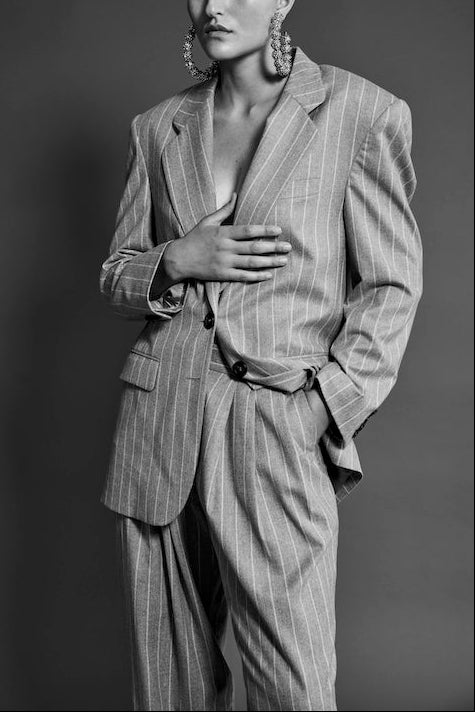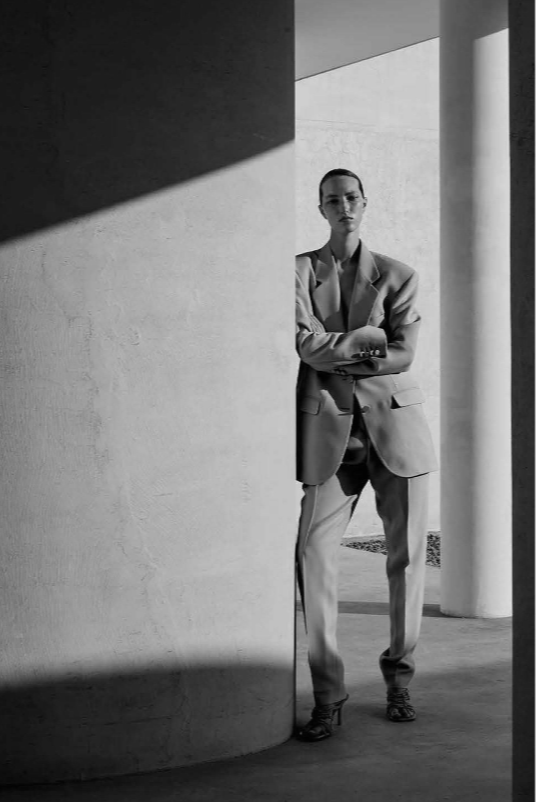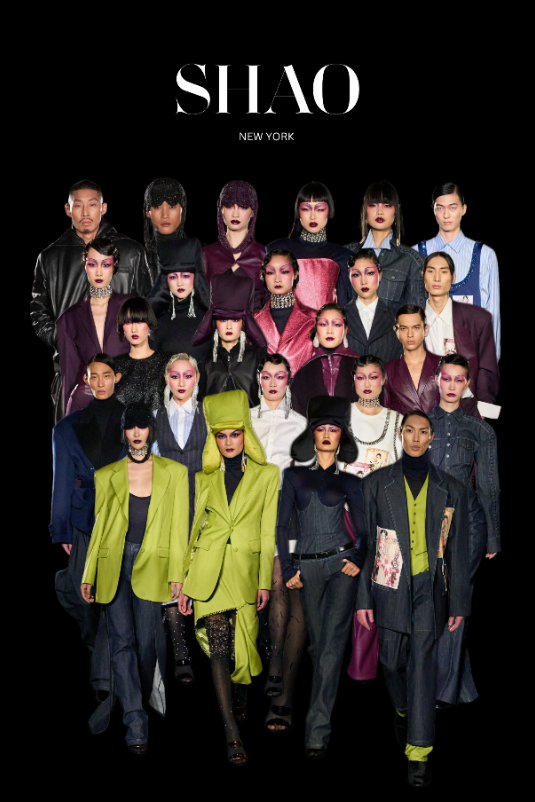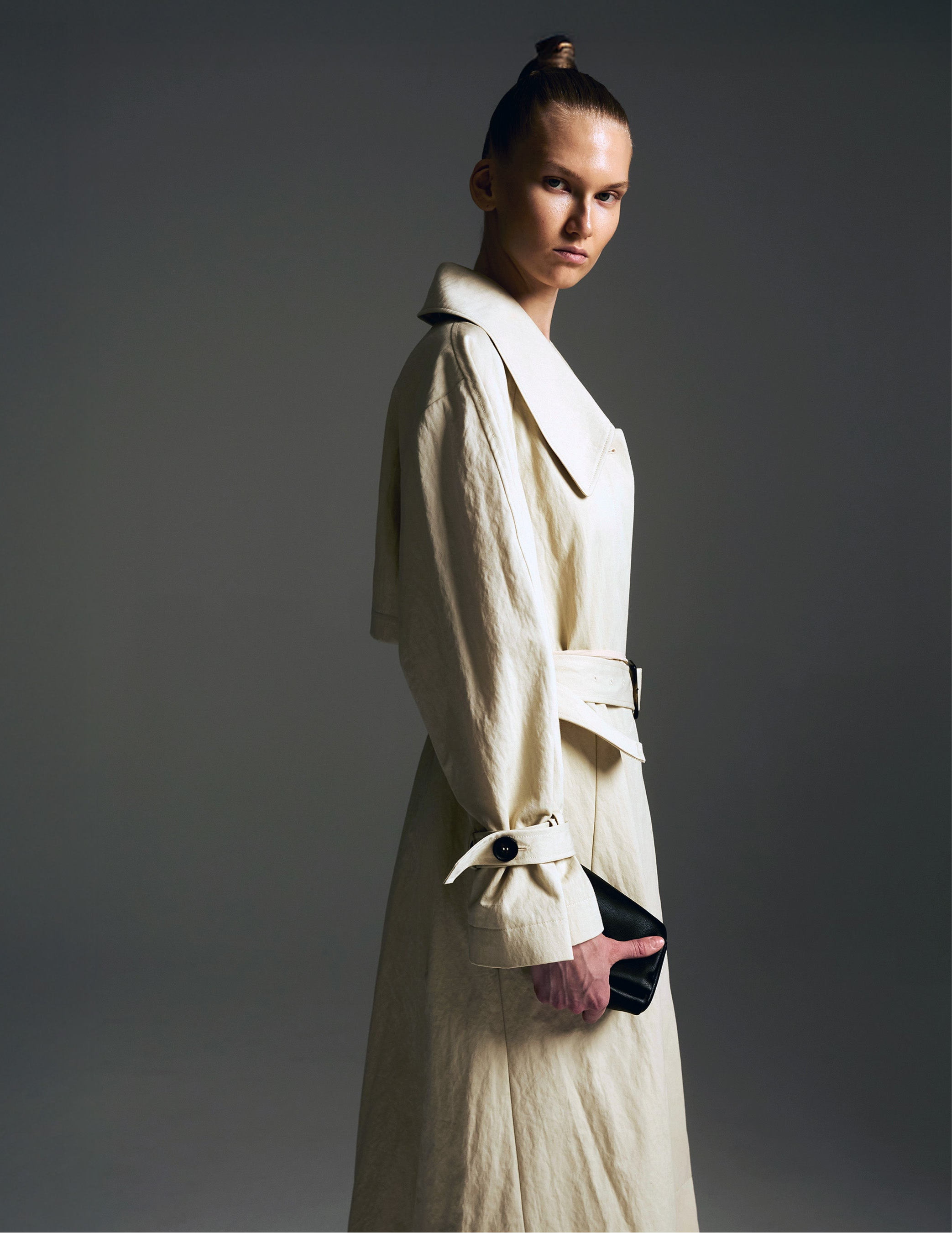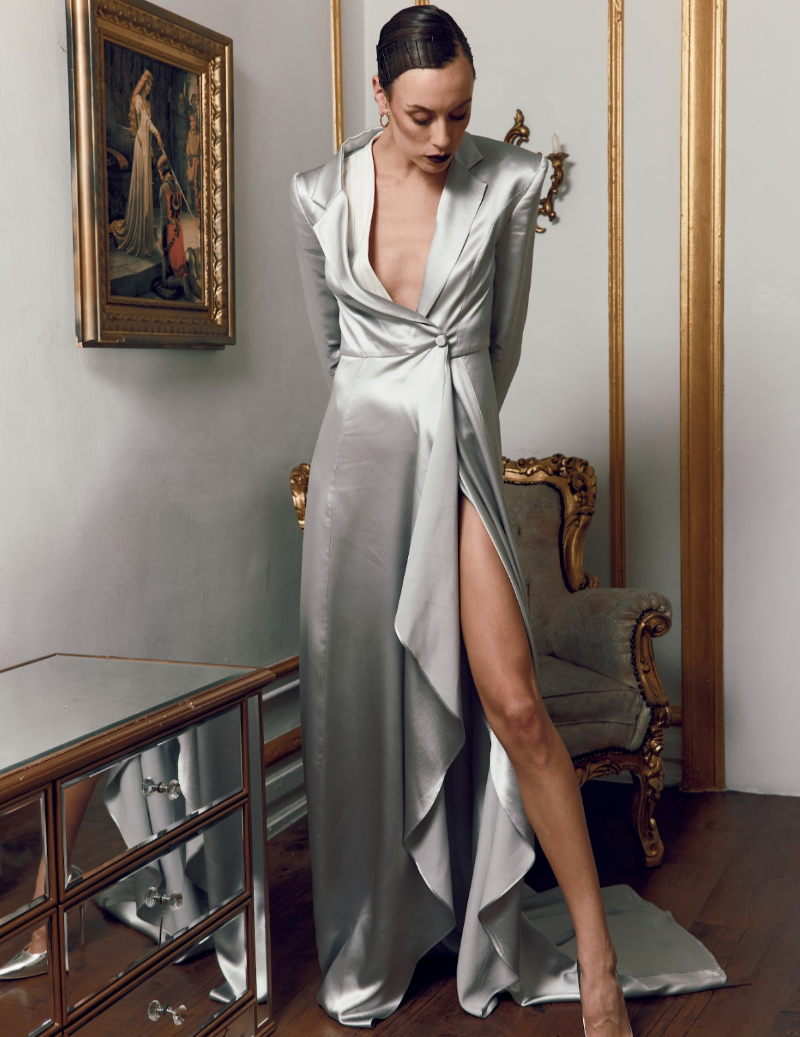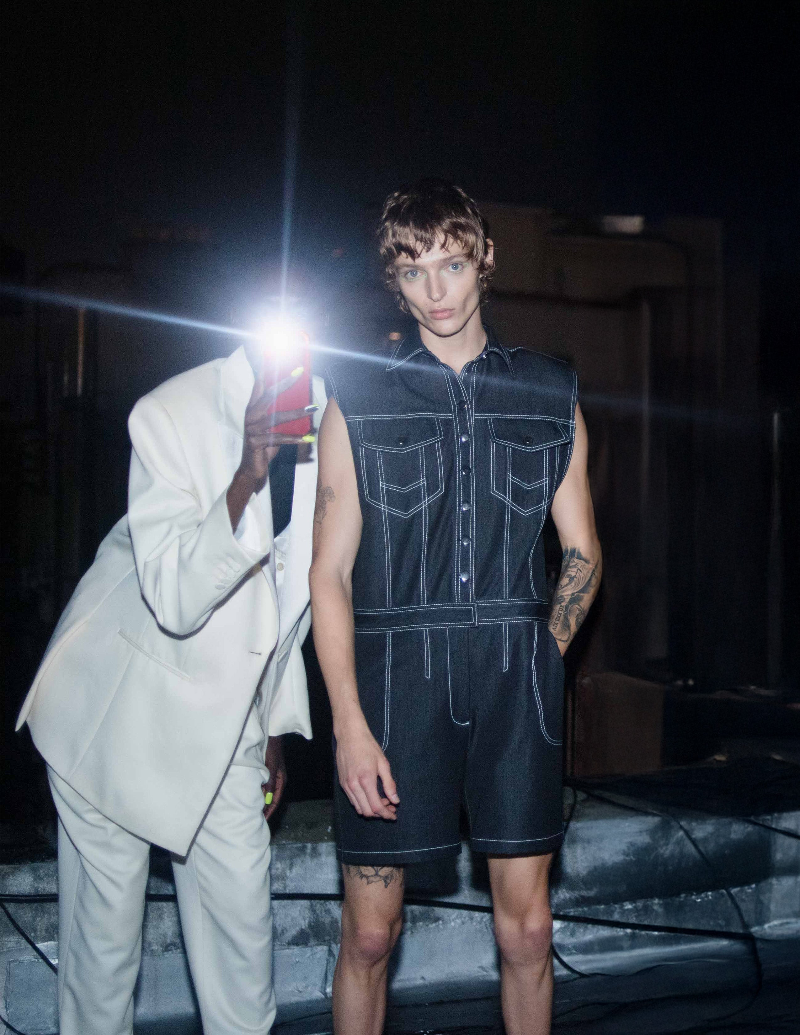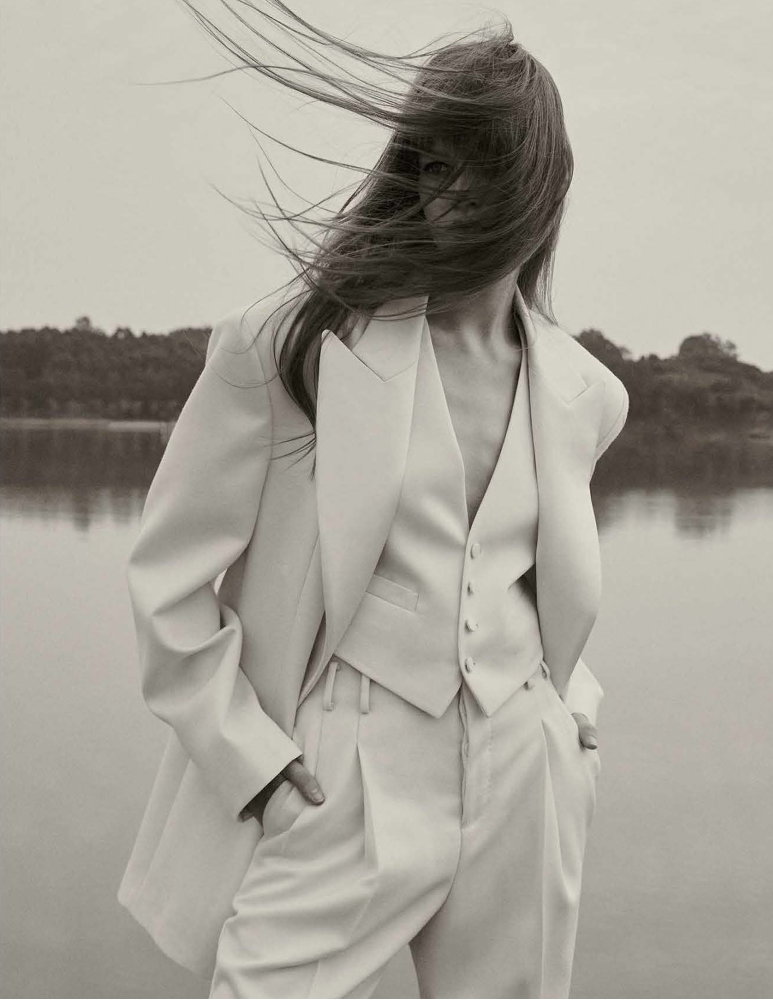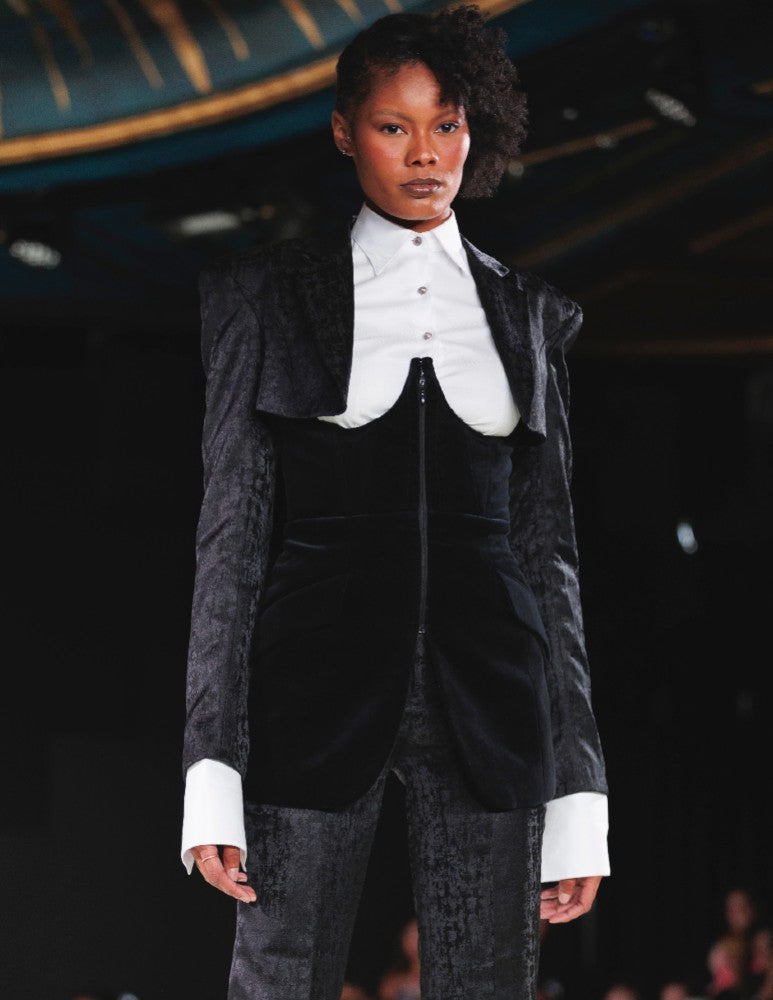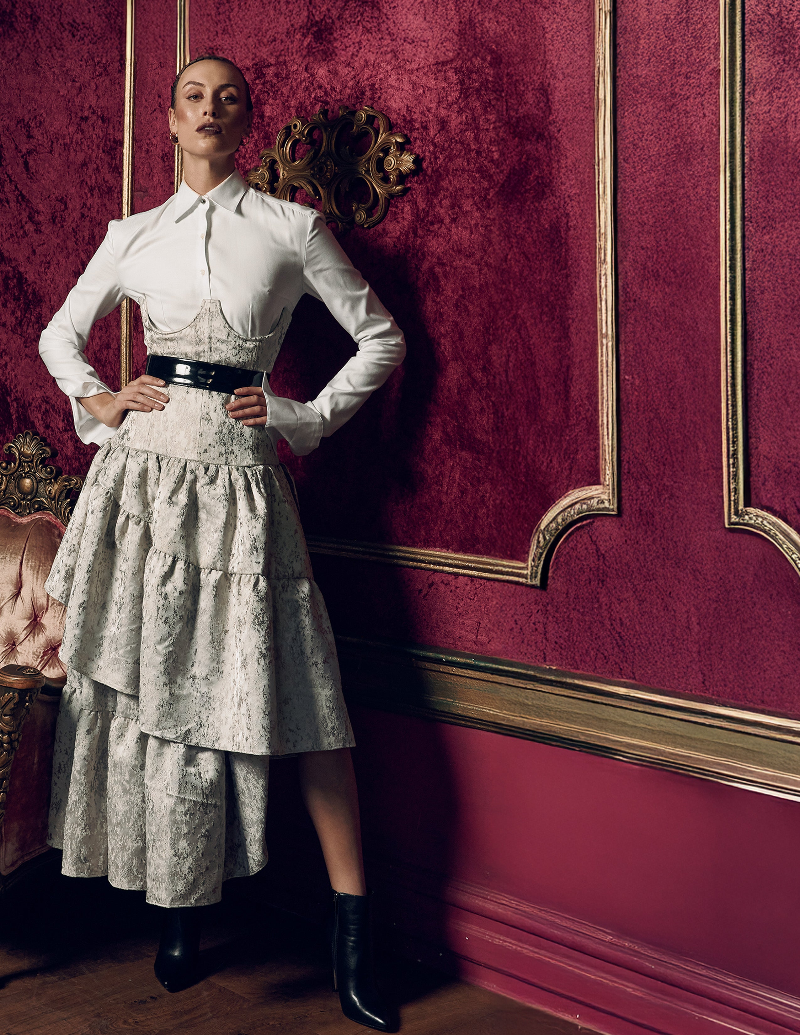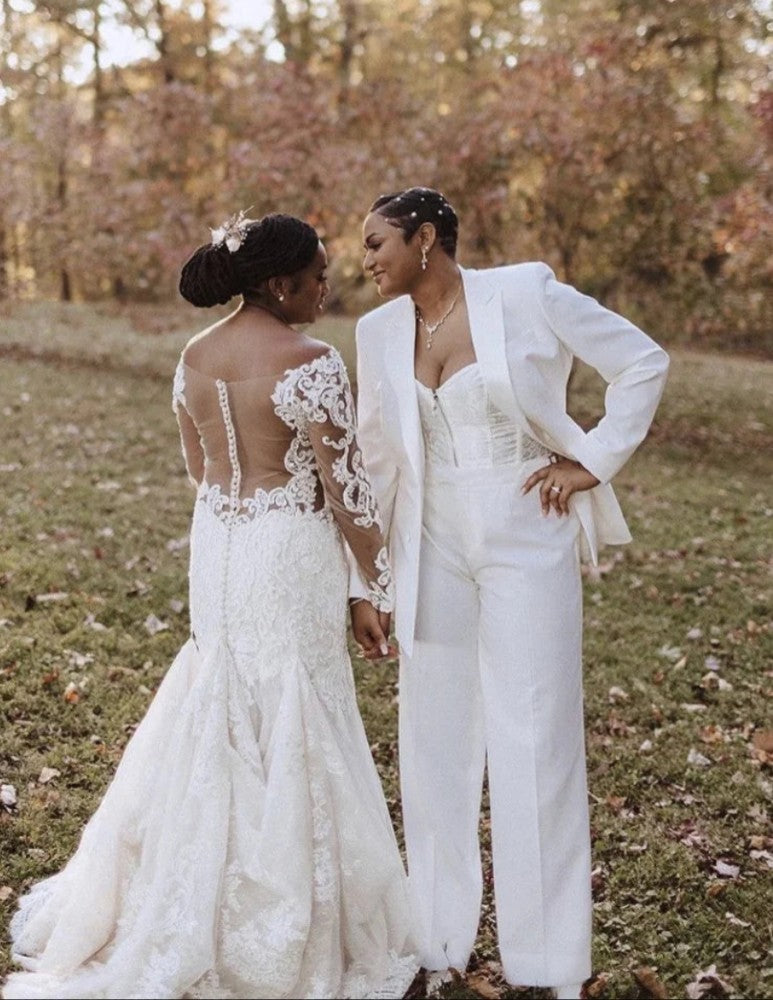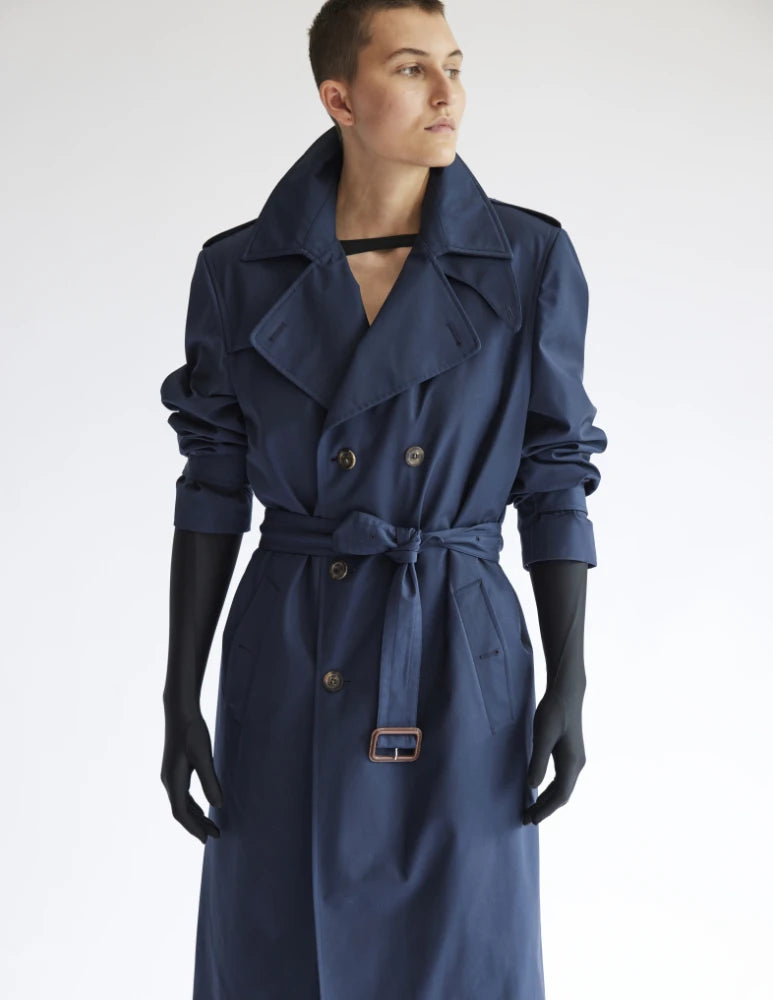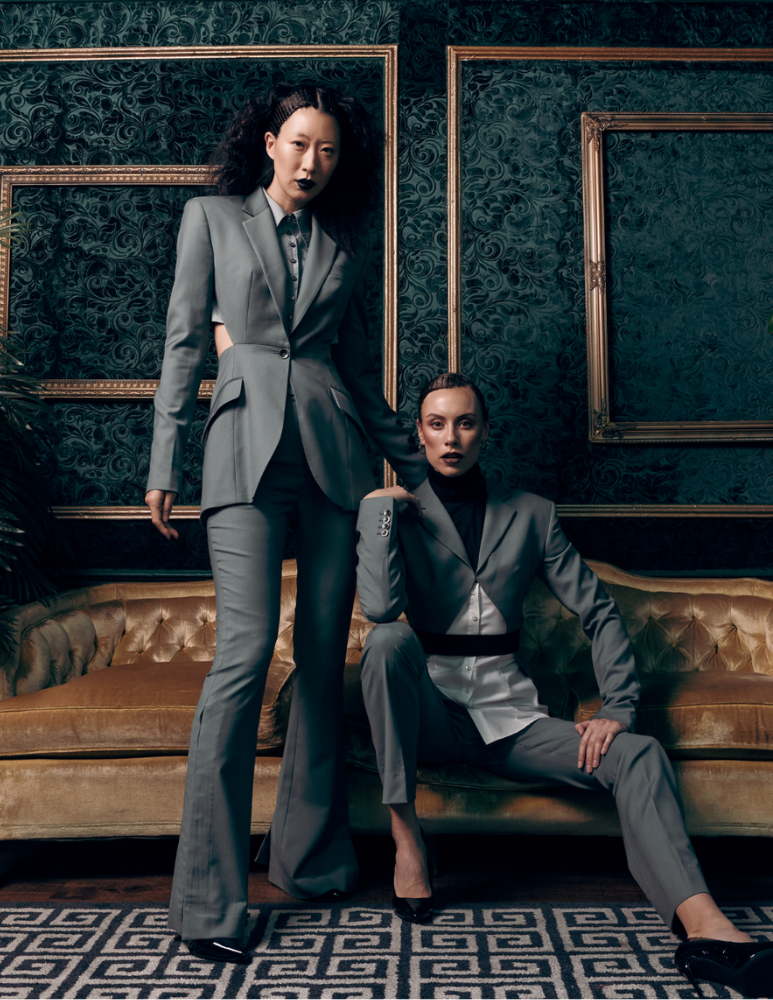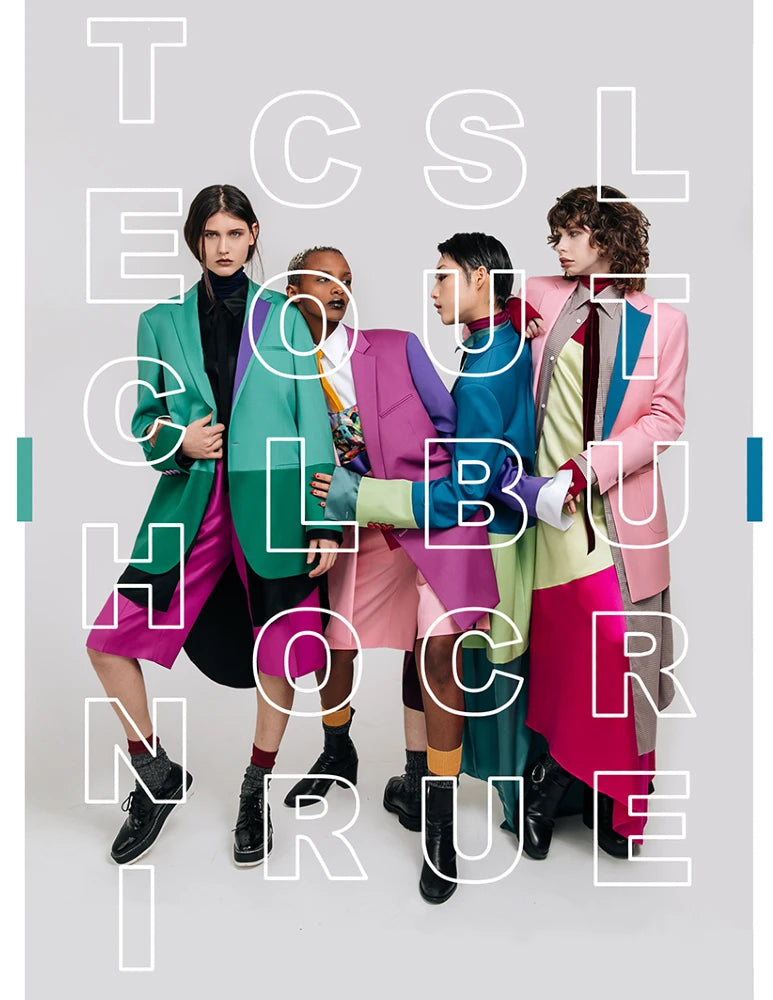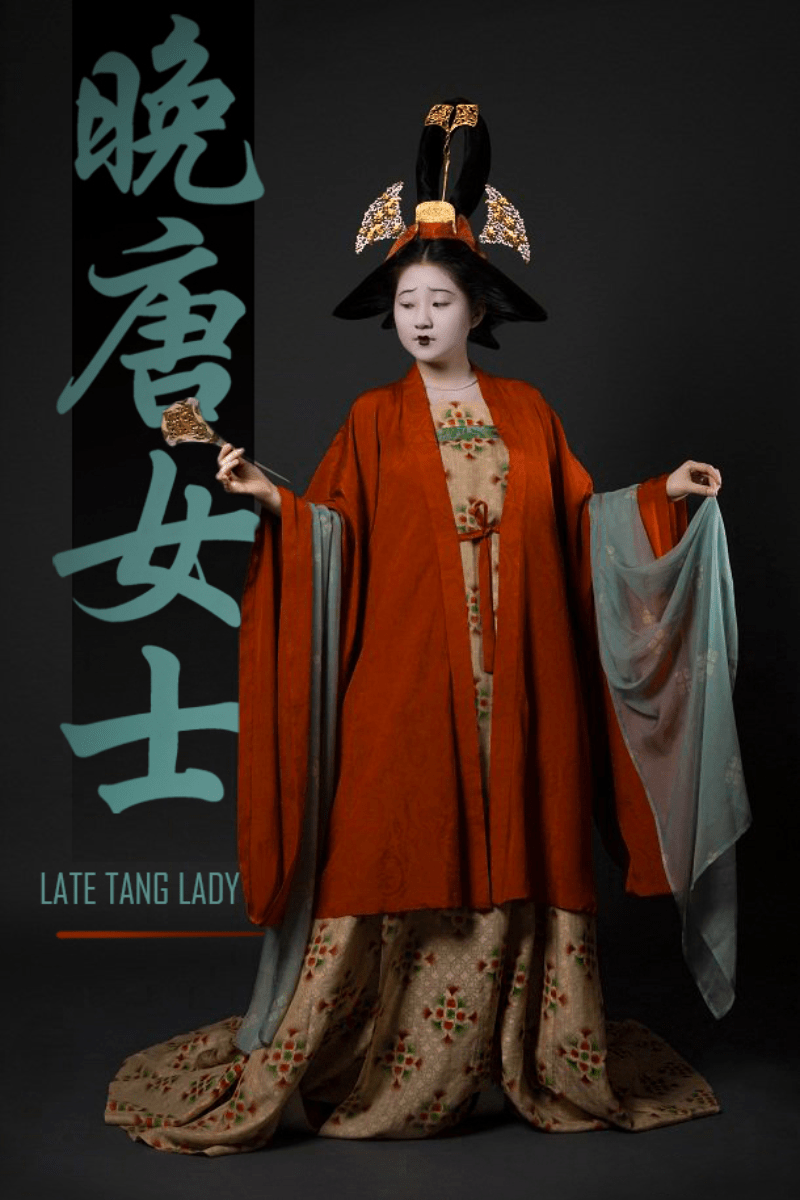When Cookie-Cutter Meets Couture Rebellion
The wedding industrial complex wants couples to believe in a fantasy of uniformity—white dress, black tux, predictable gender roles wrapped in tulle and tradition. But walk into any decent tailor shop in Tribeca these days, and witnesses observe something that sounds like a generational shift set to the rhythm of industrial sewing machines: clients demanding clothes that actually reflect who they are, not who the industry thinks they should be.
Hand-canvassed floating chest pieces—the kind of structural precision that separates bespoke from mass production the way Pearl Jam separated grunge from hair metal—create the foundation for garments that move with bodies rather than against them. Princess seams trace natural curves without forcing artificial silhouettes. Armscye measurements accommodate shoulders that carry real lives, not just fashion magazine ideals.
The technical language matters because precision in construction translates to precision in self-expression. When a tailor adjusts the pitch of a shoulder or modifies the suppression through the waist, they're not just altering fabric dimensions—they're calibrating confidence. The difference between a fused canvas construction and a full-canvas build might sound like industry jargon to outsiders, but it represents the gap between clothes that wear people and clothes that become extensions of authentic selves.
Modern couples understand this distinction viscerally. They've survived enough black-tie events in ill-fitting rental tuxedos, enough bridesmaid dress disasters that turned confident friends into uncomfortable strangers. They've watched too many wedding photos where the clothes overshadowed the people wearing them, where tradition trumped individuality so completely that the actual humans got lost in the pageantry.
Tailoring the Spectrum of Modern Identity
Wedding fashion's evolution mirrors broader cultural shifts in how people navigate identity, gender expression, and personal style. The same clients who curate their Spotify playlists with the precision of museum curators approach their wedding wardrobe with similar intentionality. They want clothes that tell their specific story, not a generic version of romance that peaked somewhere around the Clinton administration.
Custom tailoring for modern weddings requires understanding bodies and identities that don't conform to traditional sizing charts or conventional gender presentations. A trans bride might need princess seams that create feminine silhouettes while accommodating broader shoulders. A groom recovering from weight loss surgery requires different construction techniques than standard pattern adjustments can provide. Non-binary partners often seek silhouettes that exist in the space between traditional menswear and womenswear—structured like tailoring, fluid like couture.
The technical challenges mirror the cultural ones. Canvassing techniques developed for men's suiting translate differently when applied to feminine silhouettes. Traditional corsetry construction methods require modification when creating supportive garments for bodies that have undergone gender-affirming procedures. Even basic elements like button stance and lapel width carry different visual weight when applied across various body types and style preferences.
Skilled tailors approach these challenges the same way good DJs read a crowd—by listening first, then adapting their technical knowledge to serve the specific moment. The armscye might need widening for better range of motion during ceremony rituals. The trouser break might require adjustment for someone wearing custom orthotic devices. The jacket length could need shortening to accommodate a wheelchair user's seated silhouette.
These aren't alterations—they're design solutions that honor individual requirements while maintaining the structural integrity that separates quality tailoring from costume construction. The floating canvas still floats. The hand-padded lapels still roll properly. The precision remains, but the application becomes personal.
The Economics of Authenticity
Price conversations around custom wedding attire often focus on cost comparisons with off-the-rack alternatives, but that framing misses the fundamental value proposition. Custom tailoring represents investment in clothes that actually work for specific lives, rather than approximations of an idealized version that exists mainly in marketing campaigns.
Consider the hidden costs of traditional wedding wear: alterations that never quite achieve proper fit, uncomfortable shoes that survive exactly one wearing, accessories purchased to "complete the look" but never worn again. The rental tuxedo that fits like a hand-me-down from a larger, differently proportioned relative. The bridesmaid dress that transforms confident friends into walking testament to the phrase "one size fits most poorly."
Custom construction eliminates these compromise costs while creating garments designed for multiple occasions. A well-tailored wedding jacket transitions seamlessly to gallery openings, theater premieres, or anniversary dinners. Wedding trousers with proper rise and seat accommodate both ceremony seating and reception dancing. Investment pieces justify their cost through versatility and longevity—the sartorial equivalent of buying quality tools that improve with use rather than breaking down under pressure.
The mathematics become even more compelling for couples planning multiple celebrations—ceremony, reception, after-party, family gatherings across different cultural traditions. Custom pieces designed with modular elements allow costume changes without complete wardrobe overhauls. Detachable trains, convertible necklines, interchangeable accessories create multiple looks from foundational garments constructed to last decades rather than single events.
Modern tailors increasingly work with clients to develop capsule wedding wardrobes that extend celebration timelines while maintaining stylistic coherence. The jacket that anchors the ceremony ensemble might pair with different trousers for the rehearsal dinner, different accessories for the honeymoon departure. Thoughtful construction details—working buttonholes, functional pockets, breathable lining materials—ensure comfort across varying climates and activity levels.
Cultural Code-Switching Through Craftsmanship
Many contemporary couples navigate multiple cultural traditions within single celebrations, requiring wardrobe solutions that honor different aesthetic languages without creating costume-party superficiality. The technical challenges mirror diplomatic ones—how to integrate elements from various sartorial traditions while maintaining authentic respect for their origins.
Indian-influenced lehengas require different construction techniques than European ballgowns, but both traditions emphasize craftsmanship and attention to detail. Chinese qipao silhouettes translate beautifully to modern suiting when tailors understand the relationship between fabric grain and body movement. African textile traditions bring color and pattern languages that elevate traditional Western formal wear without appropriating cultural significance.
Successful integration requires tailors who understand construction techniques across multiple traditions, not just surface-level aesthetic borrowing. Hand-sewn button loops from Chinese tailoring tradition create more elegant closures than machine-made alternatives. French seaming techniques ensure longevity in lightweight silk fabrics traditional to many South Asian garments. Italian canvassing methods provide structure that supports elaborate beadwork without compromising comfort.
The cultural fluency extends to understanding ceremonial requirements across different traditions. Jewish ceremonies might require modest necklines and covered shoulders during religious portions. Hindu celebrations often span multiple days with different dress codes for various rituals. Muslim weddings frequently separate celebrations by gender, requiring different levels of formality and coverage.
Custom tailoring accommodates these requirements through clever construction details rather than obvious modifications. High necklines that transform into deep V-necks through hidden snaps. Sleeves that detach for reception dancing but reattach for family photos. Modular elements that respect cultural requirements while allowing personal expression within appropriate boundaries.
The Reset Button Generation Redefines Forever
Millennials and Gen-Z couples approach wedding planning with the same skepticism they brought to homeownership, traditional career paths, and other inherited institutions that stopped serving contemporary life somewhere around the time MTV stopped playing music videos. They've witnessed enough divorce, economic instability, and social change to understand that "forever" might need occasional recalibration.
This perspective influences wedding fashion choices in ways that extend far past single-day celebrations. Couples invest in clothes that accommodate future changes—weight fluctuations, lifestyle shifts, evolving personal style. They prioritize construction techniques that allow for alterations and updates rather than disposable fashion designed to survive exactly one Instagram-worthy moment.
Quality tailoring supports this long-term thinking through construction details that improve with age rather than deteriorating. Hand-sewn buttonholes that develop character through use. Canvas construction that molds to individual body shapes over time. Natural fiber fabrics that age gracefully rather than showing wear as damage.
The technical elements mirror emotional ones—investment in craftsmanship that deepens with time rather than fading with novelty. The same way vinyl records offer richer listening experiences than compressed digital files, hand-tailored garments provide tactile satisfaction that mass-produced alternatives can't match. The weight of properly constructed lapels, the precise roll of a well-cut collar, the seamless drape of correctly pitched shoulders—these details create sensory memories that connect physical comfort with emotional significance.
Modern couples understand that wedding photos will outlast wedding trends, but quality construction outlasts both. The jacket that fits perfectly on the wedding day should still fit properly ten years later, after promotions and pregnancy, after lifestyle changes and geographic relocations. Adjustable elements and timeless silhouettes ensure longevity that justifies initial investment through decades of wear rather than single spectacular moments.
Construction Details as Love Letters
The most meaningful custom wedding pieces incorporate personal details that function as private communications between partners, tailors, and wearers. These elements exist below the surface of obvious design choices—inside jokes translated into fabric selection, shared memories referenced through construction techniques, future hopes embedded in hidden details that won't be visible in formal photographs but will be felt with every wearing.
Hand-embroidered initials inside jacket pockets create intimate connections between public presentation and private sentiment. Lining fabrics chosen to match significant colors from relationship milestones—the concert venue where they first met, the vacation destination where they got engaged, the paint color from their first shared apartment. Buttonhole threads in colors that reference inside jokes or shared obsessions.
These details require tailors who understand the difference between customization and personalization. Customization adjusts existing patterns to fit individual measurements. Personalization creates unique elements that couldn't exist for anyone else. The distinction matters because true personalization requires understanding clients as complete humans rather than collections of measurements and style preferences.
Skilled artisans translate abstract concepts into concrete construction details. A couple bonded by their shared love of vintage motorcycles might incorporate saddle-stitching techniques typically reserved for leather goods. Partners who met in a bookstore could request French seams finished with the precision of hand-bound manuscripts. Musicians might specify button spacing that references musical intervals or color combinations that evoke specific chord progressions.
The technical execution of these details often requires combining traditional techniques with contemporary innovation. Modern synthetic threads that match traditional silk colors but offer greater durability. Laser-cut pattern pieces that allow for precision impossible with hand-cutting while maintaining the irregularities that give handwork its character. 3D body scanning that captures measurements with digital accuracy but informs construction decisions made by human hands.
When Tradition Becomes Foundation Rather Than Limitation
The most successful custom wedding pieces honor sartorial traditions while refusing to be constrained by their historical limitations. This approach requires understanding the functional reasons behind traditional construction techniques, then adapting those principles to serve contemporary needs and aesthetics.
Traditional morning dress silhouettes translate beautifully to modern celebrations when tailors understand the structural reasons behind specific proportions. The cutaway front provides elegant lines for seated ceremonies while maintaining formal presence during standing receptions. Updated with contemporary fabrics and modified proportions, morning dress offers sophistication without costume-party artificiality.
Similarly, traditional ball gown construction techniques create stunning foundation garments when applied to modern materials and silhouettes. Boned bodices provide support and structure, but contemporary boning materials offer flexibility impossible with historical whale bone or steel alternatives. Multi-layer skirt construction creates dramatic volume, but modern tulle and crinoline substitutes reduce weight while maintaining visual impact.
The key lies in understanding which traditional elements serve functional purposes versus which exist purely as historical artifact. Functional elements—proper armscye construction, balanced silhouettes, quality finishing techniques—transcend style trends. Decorative elements—specific trim applications, period-accurate closures, historical color restrictions—can be updated or eliminated based on contemporary preferences.
This selective approach allows couples to honor family traditions or cultural heritage without being imprisoned by historical limitations. A grandmother's wedding dress might provide inspiration for silhouette or detail work while being completely reconstructed in modern materials with contemporary fit techniques. Traditional family patterns might influence overall design direction while incorporating personal style preferences that didn't exist in previous generations.
The result creates continuity without repetition—wedding attire that acknowledges the past while serving present needs and future possibilities. These pieces become bridge garments that connect generational style preferences while maintaining individual authenticity.
The Future Wears What It Wants
Wedding fashion continues evolving as quickly as the couples it serves, driven by changing attitudes toward marriage, gender, consumption, and self-expression. The industry slowly adapts to serve clients who refuse to compromise authentic self-representation for traditional expectations.
Custom tailoring provides the technical foundation for this evolution by offering construction methods that accommodate diverse bodies, identities, and aesthetic preferences without forcing conformity to outdated standards. The same precision techniques that created perfect fits for previous generations now serve expanded definitions of perfection that include comfort, versatility, and personal authenticity alongside traditional measurements of quality.
The couples walking down aisles today grew up with technology that customized everything from music playlists to coffee orders. They expect similar personalization from their wedding wardrobe—clothes that reflect their specific preferences rather than generic interpretations of matrimonial appropriate dress. This expectation drives innovation in both design and construction techniques as tailors develop new methods for translating individual style into wearable reality.
Future wedding fashion will likely embrace even greater diversity in silhouettes, materials, and construction techniques as cultural norms continue shifting toward inclusivity and personal expression. Traditional gender distinctions in formal wear will probably continue blurring as more couples prioritize individual comfort over conventional presentation. Sustainable materials and construction methods may become standard as environmental consciousness influences consumption choices.
The technical skills remain constant—proper fit, quality construction, attention to detail—but their application becomes increasingly personalized. Each wedding represents an opportunity to create something that couldn't exist for anyone else, constructed to serve specific needs while maintaining the craftsmanship standards that separate investment pieces from disposable fashion.
Modern love stories deserve modern tailoring solutions that honor individual authenticity while maintaining the structural integrity that ensures longevity. The clothes that celebrate these unions should be as unique and carefully constructed as the relationships they commemorate—built to last, designed to evolve, and tailored to fit lives that refuse to conform to anyone else's pattern.
In a world where everything else comes standard, wedding attire shouldn't. Like love itself, the clothes that celebrate it work best when they're custom-fitted to the specific people wearing them, constructed to accommodate real bodies and authentic selves rather than idealized versions that exist mainly in someone else's imagination.
The needle drops, the music swells, and couples move through their celebrations in clothes that move with them—garments that understand their bodies, honor their style, and tell their particular stories. This is what happens when craftsmanship meets authenticity, when tradition serves contemporary needs rather than constraining them.
Each love story is one size fits one. Wedding attire should be too.

